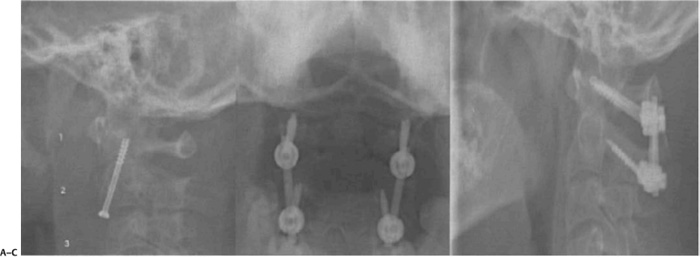

Road traffic accidents are accountable for the majority of cases. Type III odontoid fractures make up most of the remaining odontoid fractures. Type II is the most common of the types of odontoid fractures and accounts for over 50% of all odontoid fractures. Hyperextension injury causes the skull and C1 arch to cause traction at the odontoid process, while the hyperflexion injury causes the transverse ligament to limit the posterior movement of dens. This results from high-impact forces in young cohorts but with trivial injuries among elders. Odontoid fractures result from an interaction between the load magnitude and bone quality. This shows bimodal distribution with peaks among early adults and the elderly population. The axis (C2) is the most common vertebra to be involved in cervical spine injuries, and odontoid fractures account for 50% of all C2 fractures. Odontoid fractures account for 20% of cervical spine fractures in the adult population and are the most common fracture subtype in geriatric patients (≥ 65 years). If the cervical spine is excessively flexed, then the transverse ligament can transmit the excessive anterior forces to the odontoid process and cause an odontoid fracture. The transverse ligament runs dorsal to (behind) the odontoid process and attaches to the lateral mass of C1 on either side. The odontoid fracture can also occur with hyperflexion of the cervical spine. The most common mechanism of injury is a hyperextension of the cervical spine, pushing the head and C1 vertebrae backward. If the energy mechanism and resulting force are high enough (or the patient's bone density is compromised secondary to osteopenia/osteoporosis), the odontoid will fracture with varying displacement and degrees of comminution.

In the elderly population, the trauma can occur after lower energy impacts such as falls from a standing position. In younger patients, they are typically the result of high-energy trauma, which occurs as a result of a motor vehicle or diving accident. Odontoid fractures occur as a result of trauma to the cervical spine.


 0 kommentar(er)
0 kommentar(er)
